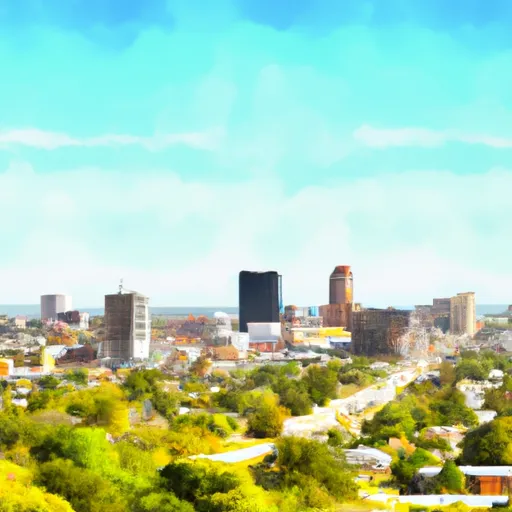-
 Snoflo Premium
Snoflo Premium
Get unlimited access to all our content
With no Ad interruptions! - Start Your Free Trial Login with existing account
Saragosa
Eden Index
Climate
9.0
•
Recreation
1.4
•
Community
•
Safeguard
4.1/10

Saragosa is a small town located in Reeves County, Texas. The town experiences a semi-arid climate with hot summers and mild winters. Summers are typically dry and hot, with temperatures often exceeding 100°F (38°C), while winters are cool with temperatures ranging from 30-60°F (-1 to 15°C). Saragosa receives relatively low annual precipitation, averaging around 10 inches (25 cm), mostly occurring during the summer months.
Hydrologically, Saragosa is situated in the Trans-Pecos region of Texas, which is characterized by a scarcity of surface water. The area relies heavily on groundwater sources, with wells providing water for both domestic and agricultural purposes. The Pecos River, located to the north of Saragosa, serves as a significant source of water for the region.
Despite its arid climate and limited water resources, Saragosa offers various outdoor recreation opportunities. The nearby Balmorhea State Park is a popular destination, known for its natural spring-fed swimming pool, where visitors can enjoy swimming, scuba diving, and snorkeling. The park also offers camping, picnicking, and hiking opportunities, providing a tranquil and refreshing escape amidst the desert landscape.
What is the Eden Index?
The Snoflo Eden Index serves as a comprehensive rating system for regions, evaluating their desirability through a holistic assessment of climate health, outdoor recreation opportunities, and natural disaster risk, acknowledging the profound impact of these factors on livability and well-being.
Climate Health Indicator (CHI): 9.0
Saragosa receives approximately
322mm of rain per year,
with humidity levels near 53%
and air temperatures averaging around
18°C.
Saragosa has a plant hardyness factor of
8, meaning
plants and agriculture in this region tend to thrive here all year round.
By considering the ideal temperature range, reliable water supplies, clean air, and stable seasonal rain or snowpacks, the Climate Health Indicator (CHI) underscores the significance of a healthy climate as the foundation for quality living.
A healthy climate is paramount for ensuring a high quality of life and livability in a region, fostering both physical well-being and environmental harmony. This can be characterized by ideal temperatures, reliable access to water supplies, clean air, and consistent seasonal rain or snowpacks.
Weather Forecast
Streamflow Conditions
Lower Pecos
Area Rivers
Lower Pecos
Snowpack Depths
Lower Pecos
Reservoir Storage Capacity
Lower Pecos
Groundwater Levels
Recreational Opportunity Index (ROI): 1.4
The Recreational Opportunity Index (ROI) recognizes the value of outdoor recreational options, such as parks, hiking trails, camping sites, and fishing spots, while acknowledging that climate plays a pivotal role in ensuring the comfort and consistency of these experiences.
Access to outdoor recreational opportunities, encompassing activities such as parks, hiking, camping, and fishing, is crucial for overall well-being, and the climate plays a pivotal role in enabling and enhancing these experiences, ensuring that individuals can engage in nature-based activities comfortably and consistently.
Camping Areas
| Campground | Campsites | Reservations | Toilets | Showers | Elevation |
|---|---|---|---|---|---|
| Balmorhea State Park | 34 | 3,313 ft |
Nearby Ski Areas
Catastrophe Safeguard Index (CSI):
The Catastrophe Safeguard Index (CSI) recognizes that natural disaster risk, encompassing floods, fires, hurricanes, and tornadoes, can drastically affect safety and the overall appeal of an area.
The level of natural disaster risk in a region significantly affects safety and the overall livability, with climate change amplifying these risks by potentially increasing the frequency and intensity of events like floods, fires, hurricanes, and tornadoes, thereby posing substantial challenges to community resilience and well-being.
Community Resilience Indicator (CRI):
The Community Resilience Indicator (CRI) recognizes that education, healthcare, and socioeconomics are crucial to the well-being of a region. The CRI acknowledges the profound impact of these elements on residents' overall quality of life. By evaluating educational resources, healthcare accessibility, and economic inclusivity, the index captures the essential aspects that contribute to a thriving community, fostering resident satisfaction, equity, and social cohesion.

